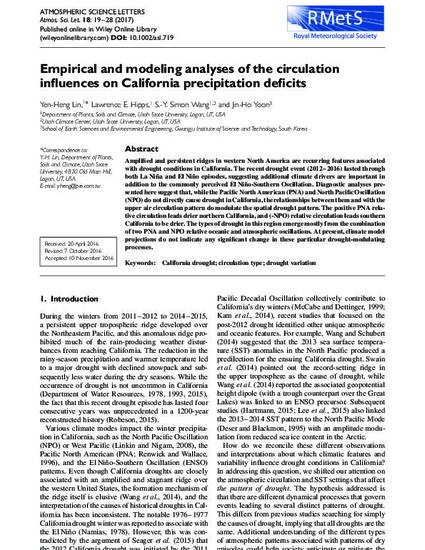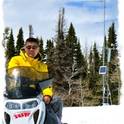
Amplified and persistent ridges in western North America are recurring features associated with drought conditions in California. The recent drought event (2012–2016) lasted through both La Niña and El Niño episodes, suggesting additional climate drivers are important in addition to the commonly perceived El Niño-Southern Oscillation. Diagnostic analyses presented here suggest that, while the Pacific North American (PNA) and North Pacific Oscillation (NPO) do not directly cause drought in California, the relationships between them and with the upper air circulation pattern do modulate the spatial drought pattern. The positive PNA relative circulation leads drier northern California, and (-NPO) relative circulation leads southern California to be drier. The types of drought in this region emerge mostly from the combination of two PNA and NPO relative oceanic and atmospheric oscillations. At present, climate model projections do not indicate any significant change in these particular drought-modulating processes.

http://onlinelibrary.wiley.com/doi/10.1002/asl.719/full